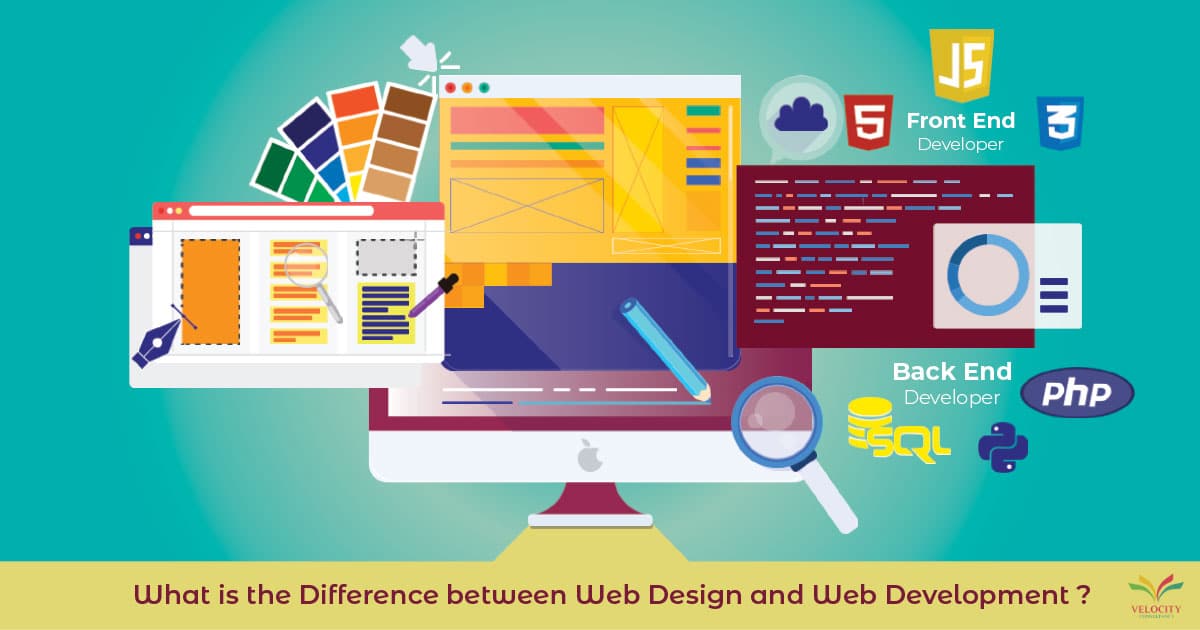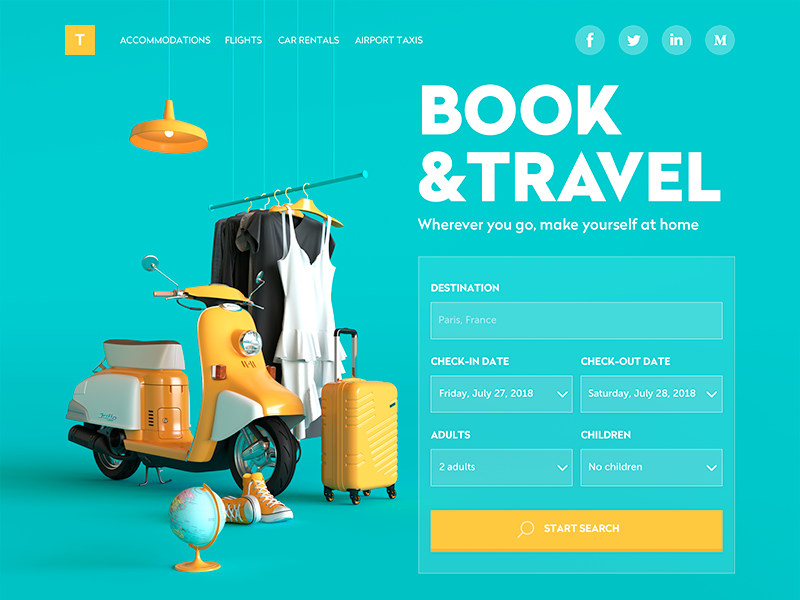Website Design London Ontario That Represents Your Business Identity
Website Design London Ontario That Represents Your Business Identity
Blog Article
How to Properly Integrate Aesthetics and Performance in Internet Design
When creating a website, you need to strike a balance in between visual appeals and performance. It's not practically looking good; your layout ought to likewise offer a function and guide users effectively. By concentrating on simplicity and user-friendly navigating, you can develop an engaging experience. However what components absolutely enhance usability while preserving visual charm? Let's check out the essential concepts that can cause an unified mix of appeal and feature.
Recognizing the Relevance of Aesthetic Appeals and Performance
When you make an internet site, understanding the equilibrium in between aesthetics and functionality is essential for creating an effective customer experience. A visually appealing site grabs focus, however it's the performance that keeps customers involved. Site visitors will rapidly lose rate of interest and leave.Consider your target audience and what draws them in if your website looks terrific but is tough to navigate. You desire to create a layout that reflects your brand name while guaranteeing convenience of use. Structured designs, instinctive navigation, and clear calls to activity can enhance both appearances and performance.

Principles of Reliable Website Design
To produce a reliable website design, you need to follow numerous vital principles that enhance both user experience and aesthetic allure. Initially, focus on simpleness; a tidy format helps users navigate easily. Use a consistent color pattern and typography to preserve coherence across your site. This promotes knowledge and trust.Next, assure your layout is receptive. Individuals accessibility sites on different gadgets, so your design ought to adapt seamlessly. Focus on visual hierarchy; emphasize crucial aspects with size, shade, or positioning to direct users' focus.Finally, include adequate white space. It protects against mess and makes content extra absorbable. Remember, reliable website design equilibriums aesthetics and capability, so every style selection must serve an objective. By following these concepts, you'll create a website that's not only aesthetically appealing however also straightforward, ultimately maintaining visitors engaged and urging them to return.
Prioritizing Customer Experience
When prioritizing customer experience, you'll intend to start by recognizing what your users genuinely require. Streamlining navigation style can make a substantial distinction in just how conveniently they find what they're searching for. Enhancing visual pecking order aids guide their attention to the most crucial components on your website.
Understanding User Requirements
Understanding user demands is essential for creating an interesting internet experience that keeps visitors returning. To accomplish this, you should identify the objectives and choices of your target audience. Start by performing customer study, like studies or meetings, to gather understandings on what customers value most. When engaging with similar internet sites, pay interest to their pain factors and challenges. This details allows you to customize your design, ensuring capability aligns with customer expectations. In addition, think about developing user characters that stand for different sections of your target market, assisting you envision their requirements throughout the design procedure. When you prioritize recognizing user requirements, you develop a website that not only looks wonderful yet also delivers a seamless, pleasurable experience that fosters loyalty.
Streamlining Navigating Style

Enhancing Visual Power Structure
A strong visual hierarchy is vital in directing individuals through your website and ensuring they engage with key web content. To achieve this, use spacing, color, and dimension strategically. Make essential components like headings larger and bolder than body text, attracting interest right away. Utilize contrasting colors to highlight phone call to activity, encouraging clicks. In addition, utilize ample white room to separate areas, making material digestible and inviting.Consider the circulation of details; set up elements logically, leading users' eyes from one indicate the following. Use visual signs, like arrows or lines, to route focus. By focusing on aesthetic pecking order, you improve customer experience and enhance the probability of conversions, ensuring your web site is both visually pleasing and functionally efficient.
Color Theory and Its Effect On Use
While picking the right shades for your website might seem like a minor detail, it significantly affects usability and user experience. Color influences how users regard details and can boost or prevent navigation. As an example, contrasting shades can help vital components stick out, making it much easier for site visitors to find what they need.Additionally, think about the psychology of colors: blue frequently influences depend on, while red creates necessity. Understanding your target audience can assist your shade options, ensuring they reverberate well.Moreover, regular color design help construct brand identification, making your web site a lot more unforgettable. Be mindful-- also lots of colors can overwhelm users. Adhere to a minimal palette that enhances your content and maintains clarity.Incorporating availability is also vital; confirm your shade mixes get along for those with aesthetic impairments. By thoughtfully using shade concept, you'll enhance functionality and develop a more interesting customer experience.
Typography: Balancing Style and Readability
Color options set the stage for your site, however typography plays a just as crucial role in enhancing user experience. You desire your text to communicate plainly while likewise mirroring your brand's character. pop over to this site Begin by selecting typefaces that are not only attractive but also understandable. Sans-serif typefaces frequently work well for digital displays, as they're less complicated to review at various sizes.Maintain a pecking order by utilizing various typeface sizes and weights; this overviews customers through your web content effortlessly. Take into consideration line spacing and letter spacing; also limited can frustrate viewers, while as well loose can disrupt the circulation. Restriction your font selections to two or 3 to keep the design cohesive.Finally, always test your typography across various tools and internet browsers. What looks great on one display may not on another. Stabilizing style with readability assurances that your message resonates, maintaining your target market engaged and notified.
Responsive Layout: Making Looks Work on All Gadgets
To assure your website looks great on any kind of device, you'll require to welcome receptive layout concepts. This approach warranties your site adapts to various screen sizes, providing a perfect customer experience. Begin by utilizing liquid grids and adaptable photos that scale perfectly. Instead of repaired measurements, go with portions and family member systems, enabling your format to change dynamically.Next, carry out media inquiries in your CSS. These allow you use various styles based on gadget features, like display size. By doing this, you can keep visual charm while guaranteeing functionality.Don' t forget touch targets; make sure switches and links are easy to tap on smaller sized displays. Focus on vital material, so individuals can easily browse your website no matter their tool. By focusing on these components, you'll create an appealing, visually appealing experience that meets the demands of all users, whether they get on a mobile phone, desktop computer, or tablet .
Performing Use Screening for Continual Enhancement
To improve your website design, you require to set clear use objectives that line up with individual needs. By carrying out individual tests, you can gather useful responses on exactly how actual individuals connect with your website. Assessing these outcomes will assist you make notified enhancements and produce a much more efficient user experience.
Defining Use Goals
While visual appeals can attract customers in, specifying use objectives is important for ensuring their experience stays smooth and enjoyable. Beginning by identifying what you desire customers to achieve on your website (website design london Ontario). Consider their actions, tasks, and needs. Are they trying to find information, buying, or signing up for a newsletter? Develop clear standards to gauge success, like task completion prices or time on task. Prioritize user-friendly navigating, available content, and receptive design to improve functionality. On a regular basis revisit these objectives as customer expectations develop. By specifying usability objectives, you create a structure for reviewing and boosting your web site's performance. This focus on functionality not only improves individual complete satisfaction but likewise strengthens the total efficiency of your design
Performing Individual Tests
Carrying out user tests is important for refining your web site and ensuring it fulfills your target market's requirements. Begin by identifying your target customers and producing a test strategy that details your purposes. Utilize a mix of qualitative and quantitative approaches, such as studies, interviews, and task-based observations, to gather thorough responses. Welcome participants to browse your website while you observe their communications and note any troubles they run into. Motivate open dialogue to record their ideas and feelings concerning the layout and functionality. Maintain sessions short and focused, guaranteeing you cover vital locations without overwhelming customers. Make certain to record all searchings for, as this details will be important for making educated style decisions that improve both aesthetics and functionality.
Examining Test Outcomes
Just how can you efficiently evaluate the results of your use tests to drive continual improvement? Beginning by categorizing feedback into typical themes. Seek patterns in user actions that highlight discomfort factors or locations for improvement. Use quantitative data, like task completion prices and time on job, to determine use objectively. Don't forget to take right into account qualitative understandings from individual remarks; they commonly disclose underlying issues that numbers can not reveal. Focus on the most impactful findings and develop actionable products for your style team. Keep in mind, it has to do with iterating-- execute modifications, then test again. This cycle of screening, examining, and refining helps you balance looks and functionality, guaranteeing your site satisfies individual needs effectively while maintaining visual appeal.
Often Asked Questions
How Do I Pick the Right Color Palette for My Site?
To pick the ideal color scheme for your internet site, consider your brand name's personality, target market, and emotional effect (website design london Ontario). Use color psychology, produce harmony, and assurance readability. Test combinations to see what reverberates finest with visitors
What Devices Can Assist With Website Design Appearances and Capability?
You can make use of tools like Adobe XD, Figma, and Lay out to improve your web design's looks and performance. These platforms use user-friendly interfaces, cooperation functions, and pre-made templates to simplify your creative procedure and enhance your layouts.
Just How Can I Incorporate Animations Without Endangering Capability?
To include animations without jeopardizing performance, focus on subtle results that enhance user experience. Use useful link CSS animations for smoother useful content communications, guarantee fast lots times, and examination on different devices to keep efficiency while adding aesthetic appeal.
What Prevail Blunders to Prevent in Internet Layout Visual Appeals?
When creating, prevent chaotic layouts, bad shade choices, and inconsistent typefaces. Do not neglect mobile responsiveness, as it can push away customers. Validate your design aligns with your brand, creating a smooth experience that engages site visitors successfully.
Just how Frequently Should I Update My Internet site's Design for Optimal Aesthetics?
You must upgrade your website's design every 1-2 years to stay on par with trends and preserve excellent appearances. Frequently restoring visuals aids involve site visitors and assurances your website remains straightforward and enticing. When you make a website, understanding the balance between appearances and functionality is crucial for developing an effective individual experience. To produce a reliable internet style, you need to adhere to several key concepts that improve both individual experience and visual appeal. Users access sites on different gadgets, so your style must adapt perfectly. When prioritizing customer experience, you'll desire to begin by recognizing what your customers absolutely require. Begin by conducting customer research study, like interviews or surveys, to gather insights on what users value most.
Report this page